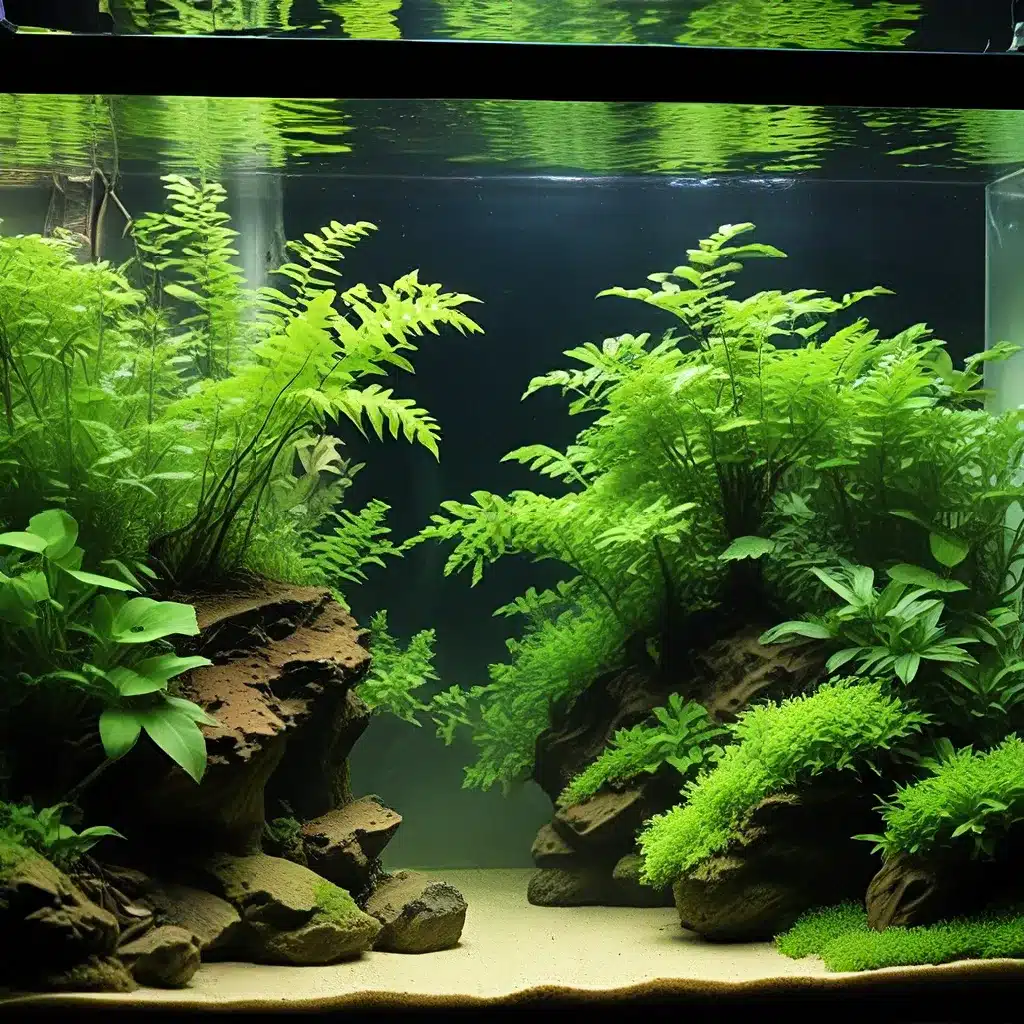
Mastering the Art of Aquarium Carpet Plants
Aquarium carpet plants are a true delight for any hobbyist, transforming the aesthetic of a tank with their lush, verdant growth. However, cultivating and maintaining these captivating foreground plants can present some unique challenges. In this comprehensive guide, we’ll dive deep into the essential techniques and considerations to help you unlock the secrets to growing stunning aquarium carpets.
Selecting the Right Carpet Plants
Not all aquarium plants are created equal when it comes to carpeting. Some species are inherently better suited for this purpose, exhibiting the key traits that contribute to a dense, uniform ground cover. Some of the most popular and successful carpet plants include:
-
Glossostigma elatinoides (Glosso): A native of New Zealand, Glosso is renowned for its rapid horizontal growth and ability to spread across the substrate, forming a tight, low-growing carpet.
-
Hemianthus callitrichoides (HC Cuba): Renowned for its delicate, moss-like appearance, HC Cuba is a challenging but rewarding carpet plant that can create a stunning, lush foreground.
-
Eleocharis parvula (Dwarf Hairgrass): This fast-growing, lawn-like grass is a perennial favorite, able to transform a tank into a verdant underwater meadow with the right care.
When selecting your carpet plants, consider factors such as growth rate, final height, and light and nutrient requirements to ensure a harmonious and thriving aquascape.
Laying the Foundation: Substrate Preparation
Achieving a successful carpet starts with the foundation – a well-prepared, nutrient-rich substrate. Aquarium carpet plants, unlike their taller counterparts, rely heavily on the substrate for their primary sources of nutrition, rather than drawing from the water column.
Ensure your substrate is a mix of finer-grained materials, such as a nutrient-rich aquarium soil or powder, combined with a coarser substrate like gravel or sand. This combination helps prevent soil compaction, allowing the delicate carpet roots to spread and thrive.
Additionally, consider incorporating root tabs or liquid fertilizers tailored for carpeting plants to provide an ongoing supply of essential nutrients. A healthy, nutrient-rich substrate is the cornerstone of a lush, thriving aquarium carpet.
Lighting and CO2: The Dynamic Duo
Aquarium carpet plants are typically low-growing and require high-intensity lighting to fuel their rapid horizontal growth. Invest in a quality LED or high-output lighting system that can provide consistent, powerful illumination across the entire tank.
Supplemental carbon dioxide (CO2) is also a crucial element for achieving a dense, healthy carpet. The increased availability of CO2 helps carpet plants excel, promoting robust root development and encouraging the spread of new growth.
Develop a reliable CO2 injection system and pair it with a comprehensive fertilization regimen to ensure your carpet plants have access to all the essential nutrients they need to thrive.
Planting Techniques and Maintenance
When it comes to planting your carpet, attention to detail is key. Carefully position each individual plant or cutting, ensuring they are firmly rooted in the substrate and evenly spaced. This will help establish a uniform, cohesive carpet from the very beginning.
Regular Trimming: As your carpet plants grow, they will require frequent trimming to maintain their dense, low-profile appearance. Use sharp, curved aquascaping scissors to carefully snip the tops of the plants, encouraging lateral growth and preventing the carpet from becoming overgrown and uneven.
Avoiding Overlapping Layers: One of the common pitfalls of carpet plant maintenance is allowing the upper layers to block light from reaching the lower levels. Regularly trim your carpet to prevent this issue, ensuring all the plants receive sufficient illumination for optimal growth.
Patience and Persistence: Establishing a lush, healthy aquarium carpet requires time, patience, and a commitment to consistent maintenance. Be prepared to trim your carpet plants every 2-4 weeks, depending on their growth rate, to keep them looking their best.
Transitioning to a Low-Tech Setup
While CO2 injection and high-intensity lighting are often recommended for achieving a stunning carpet, it is possible to create a beautiful foreground display in a low-tech aquarium setup. Plants like Staurogyne repens and Dwarf Sagittaria are well-suited for low-tech tanks, thriving in nutrient-rich substrates and with the addition of root tabs or liquid fertilizers.
The key in a low-tech system is to carefully balance lighting, plant selection, and maintenance to create the ideal conditions for your carpet plants to flourish at a slower, but still captivating, pace.
Embracing the Journey
Cultivating a lush, healthy aquarium carpet is a true test of an aquarist’s dedication and attention to detail. By meticulously selecting the right plants, preparing the substrate, and meticulously maintaining your aquascape, you can transform your tank into a verdant underwater oasis.
Remember, the journey of creating a stunning carpet is just as rewarding as the final result. Embrace the process, learn from your experiences, and don’t be afraid to experiment. With patience and persistence, you’ll unlock the secrets to growing the aquarium carpet of your dreams.
Visit King Aquarium today to explore our wide selection of high-quality aquarium plants, CO2 systems, and aquascaping tools to help you achieve your vision.

